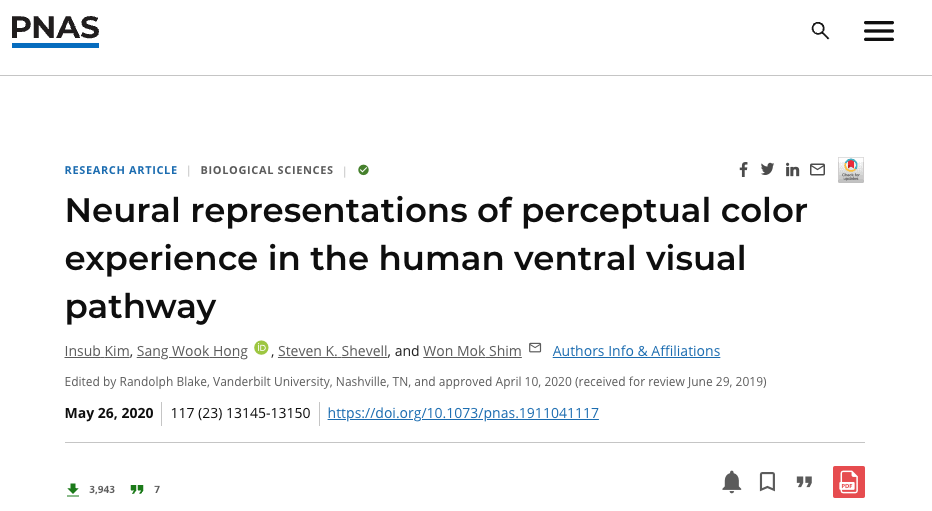There is no color in light. Colors are from biological interpretations of our brain.
SungKyunkwan University
In collaboration with Steve Shevell and Won Mok Shim
In collaboration with Steve Shevell and Won Mok Shim
2020

Our subjective color experience is derived from neural representations of the wavelength composition of light that enters the eyes. Which areas of our brains will have representations of the colors we experience?

Interocular switch rivalry. Two different chromatic stimuli were continuously presented to each eye to induce perceptual rivalry so that only one of the two colors was seen at a time. The chromatic stimuli were swapped between the two eyes at a frequency of 4.25 Hz so that identical stimuli were presented to each eye over a given time period. Observers indicated their moment-to-moment perceived colors by continuous button presses.
We used chromatic interocular switch rivalry (Christiansen, D’Antona & Shevell, 2017) to dissociate hue perception from retinal stimulation by light stimulus, measuring th neural activities of moment-to-moment subjective color experiences across the human visual system using fMRI.

Reconstuction of magenta color expereinces in visual area V1 and V4v. Rivalry: Each eye at a given time receive either magenta and green chromaticities (perception ≠ light input). Replay: Each eye recives only magenta chromaticity (perception = light input). Each dot is reconstructed color represntation for on obersver. The magenta colored line is the target color. The solid black line is vector sum of the reconstructed color representations across observers.
Using an model based encoding apporach (Brouwer & Heeger, 2009), we found that population-level color-selective responses represented subjective, moment-to-moment color experiences, and the selectivity of these responses for the perceived color became progressively stronger across the cortical visual hierarchy. The reconstructed color responses in V4v, and VO1 closely resembled subjective color experiences, suggesting that the neural representation of color experiences emerges at later stages of cortical visual processing.